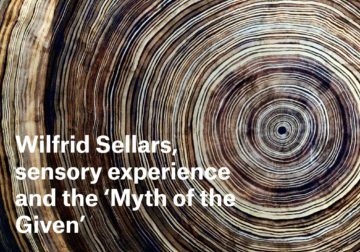Nate Sheff in Psyche:
 Most of us think that knowledge starts with experience. You take yourself to know that you’re reading this article right now, and how do you know that? For starters, you might cite your visual experiences of looking at a screen, colourful experiences. And how do you get those? Well, sensory experiences come from our sensory organs and nervous system. From there, the mind might have to do some interpretative work to make sense of the sensory experiences, turning the lines and loops before you into letters, words and sentences. But you start from a kind of cognitive freebie: what’s ‘given’ to you in experience.
Most of us think that knowledge starts with experience. You take yourself to know that you’re reading this article right now, and how do you know that? For starters, you might cite your visual experiences of looking at a screen, colourful experiences. And how do you get those? Well, sensory experiences come from our sensory organs and nervous system. From there, the mind might have to do some interpretative work to make sense of the sensory experiences, turning the lines and loops before you into letters, words and sentences. But you start from a kind of cognitive freebie: what’s ‘given’ to you in experience.
It’s a tantalising idea, and maybe it’s close to the truth. But if we’re not careful, we might run afoul of what the American philosopher Wilfrid Sellars (1912-89) called ‘the Myth of the Given’. While many philosophers consider Sellars’s attack on the Myth to be his legacy, it’s one of his least-understood ideas. That’s too bad, because once we set aside ‘epistemological shoptalk’ (one of my favourite Sellarsisms), the basic idea is simple – and far-reaching.
Let’s start with something easy. You probably know how to read tree rings, the circles-within-circles that appear in the cross-sections of trees. Tree rings form as a tree grows, making new layers of bark. Counting the rings helps you determine the tree’s age, since each ring correlates with one year of growth. Now imagine we’re looking at a recently felled oak, and we count 75 rings. It would be innocent for me to say to you: ‘Those 75 rings mean the tree was 75 years old.’ More metaphorically, the rings ‘tell us about’ the tree’s age.
In a stricter sense, though, the tree rings don’t really ‘say’ anything. The patterns in the tree can give useful information to anyone who can read them, but the rings themselves aren’t actually ‘about’ anything. Remember, a ring forms as a side-effect of trees doing what trees do. They don’t express information in the way that trails, maps or sentences do.
But why not?
More here.
